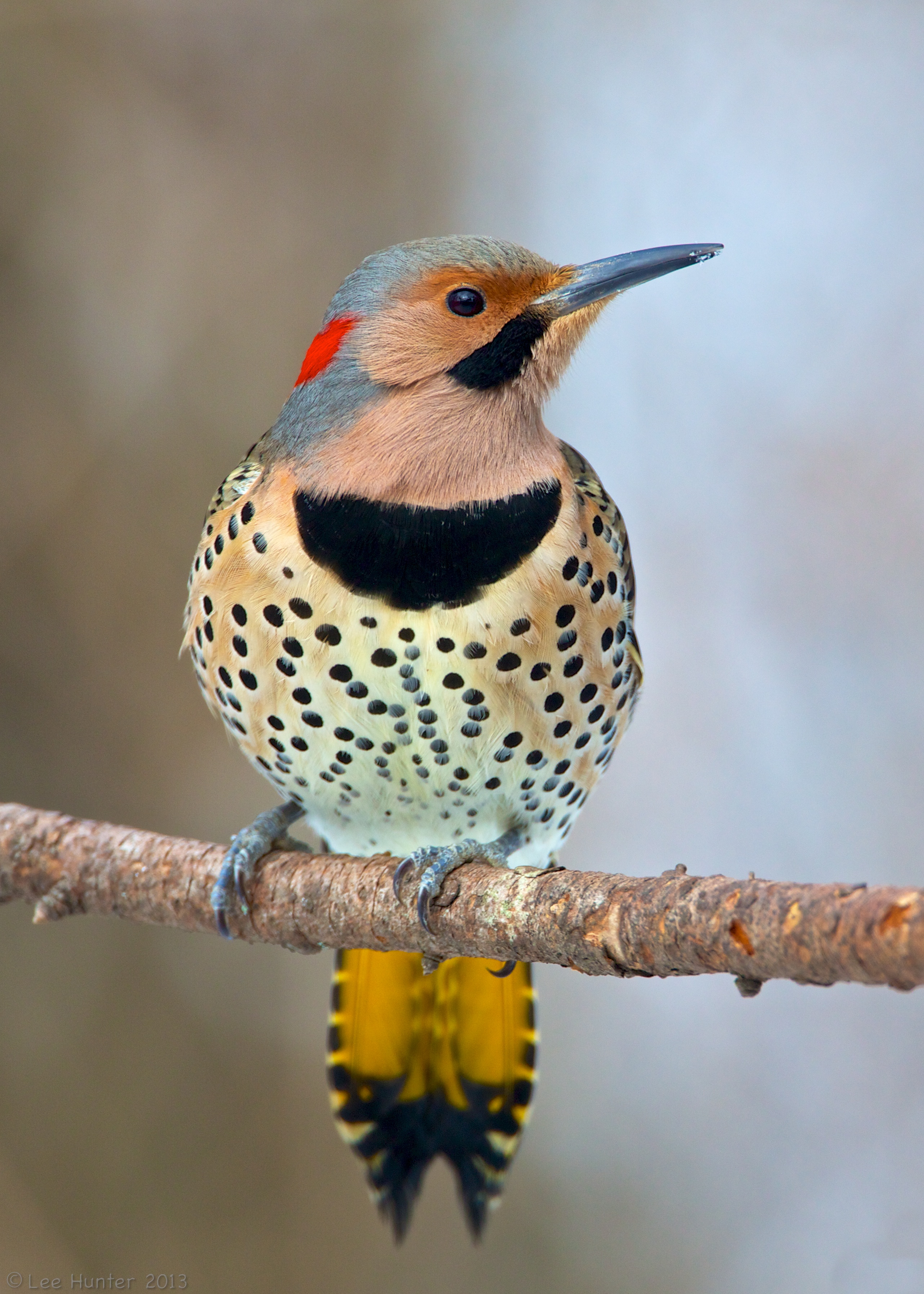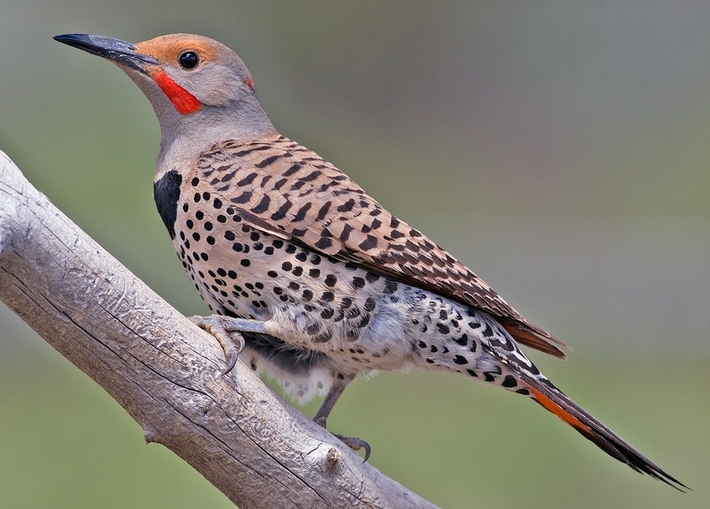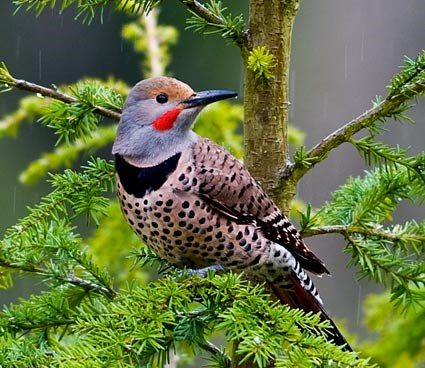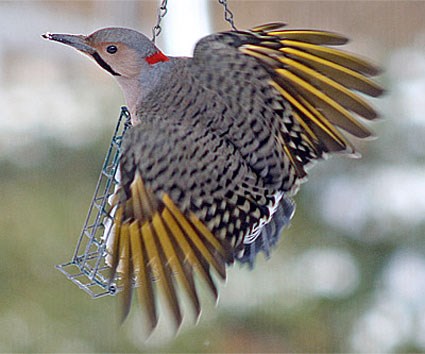
Colaptes auratus
SUBFAMILY
Picinae
TAXONOMY
Colaptes auratus Linnaeus, 1758, based on the drawing of the
“golden-winged wood-pecker” by Mark Catesby. Has at times
been separated into red-shafted (C. cafer) and yellow-shafted
species (C. auratus), but considerable hybridization occurs in
the North American Great Plains. Four major racial groups including
nine races are recognized. The gilded flicker (C.
chrysoides) is sometimes considered as another race of the
northern flicker.
OTHER COMMON NAMES
English: Common flicker, yellow-shafted flicker, red-shafted
flicker, Guatemalan flicker, Cuban flicker; French: Pic flamboyant;
German: Goldspecht; Spanish: Carpintero Escapulario.
PHYSICAL CHARACTERISTICS
11.8–13.8 in (30–35 cm); 3.1–5.8 oz (88–164 g). Primarily a
ground-feeding woodpecker that is camouflaged with earthtoned
colors and black spotting on back and wings, a disruptive
black “V” on its breast, and heavy black spotting on belly
and flanks; western forms have red-vaned flight feathers, eastern
and southern forms yellow-vaned flight feathers, hybrids
have orange; male red-shafted flickers have a red “moustache”
stripe, yellow-shafted have a black moustache, hybrids intermediate.
DISTRIBUTION
Throughout North America from west central Alaska to the
northern regions of the Yukon, Manitoba, Ontario, and Quebec,
to southern Labrador and Newfoundland, south
throughout North America and adjacent islands to northern
Baja California, southern Mexico, north central Nicaragua,
Cuba, Isle of Pines, Cayman Islands.
DISTRIBUTION
of the four
major racial groups: C. a. auratus, northern and eastern North
America; C. a. cafer, western North America and Mexico; C. a.
mexicanoides, highlands from Chiapas south to Nicaragua; C. a.
chrysocaulosus, Cuba and Cayman Islands.
HABITAT
Very open forest to savanna with sparse understory, urban and
suburban parks and landscapes, less commonly in treeless
grasslands.
BEHAVIOR
Northern populations migratory, many others resident. The
Cuban form seems more arboreal than continental forms. Solitary
much of the time, but migrants found in small flocks. May
roost in or on buildings.
FEEDING ECOLOGY AND DIET
Generally feeds on the ground on ants and other arthropods;
also feeds on arthropods in well-rotted wood; fruits, and seeds
in season.
REPRODUCTIVE BIOLOGY
Monogamous; often nests in near treeless areas, excavating cavities
in utility poles, occasionally dirt banks; sometimes uses
nest boxes. Not a strong excavator and often uses available cavities.
Nesting occurs February–August (earlier in warmer latitudes,
later in colder areas). Clutch size 3–12 eggs, 4–9
common; incubation 11–12 days by both parents; young fledge
at 25–28 days. Young are fed by regurgitation. Two broods
possible. Often suffers from competition for cavities with the
introduced European starling (Sturnus vulgaris).
CONSERVATION STATUS
Not threatened. Guadeloupe flicker (Colaptes auratus rufipileus)
of Guadeloupe Island off Baja California is extinct.
SIGNIFICANCE TO HUMANS
Often mentioned in folklore, feathers were used decoratively
by Native Americans; sometimes eaten and considered a game
bird; occasionally causes problems by excavating into the siding
of homes and other buildings.
Other popular Animals
Photo Gallery of - Northern flicker




 Animalia Life
Animalia Life